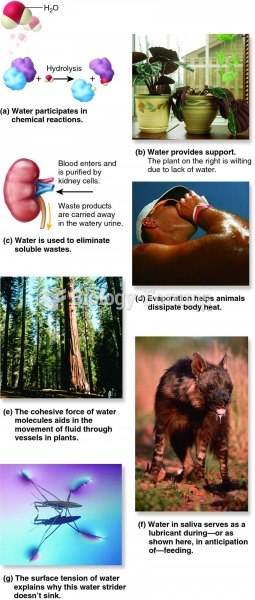Answer to Question 1
ANS:
Even safe water may have characteristics that some consumers find unpleasant. Most of these problems reflect the mineral content of the water. For example, manganese and copper give water a metallic taste, and sulfur produces a rotten egg odor. Iron leaves a rusty brown stain on plumbing fixtures and laundry. Calcium and magnesium (commonly found in hard water) build up in coffeemakers and hot water heaters. Similarly, soap is not easily rinsed away in hard water, leaving bathtubs and laundry looking dingy. For these and other reasons, some consumers have adopted alternatives to the public water system.
Answer to Question 2
ANS:
Most major cities obtain their drinking water from surface waterthe water in lakes, rivers, and reservoirs. Surface water is readily contaminated because it is directly exposed to acid rain, runoff from highways and urban areas, pesticide run-off from agricultural areas, and industrial wastes that are dumped directly into it. Surface water contamination is reversible, however, because fresh rain constantly replaces the water. It is also cleansed to some degree by aeration, sunlight, and plants and microorganisms that live in it.
Groundwater is the water in underground aquifersrock formations that are saturated with and yield usable water. People who live in rural areas rely mostly on groundwater pumped up from private wells. Groundwater is contaminated more slowly than surface water, but also more permanently. Contaminants deposited on the ground migrate slowly through the soil before reaching groundwater. Once there, the contaminants break down less rapidly than in surface water because of the lack of aeration, sunlight, and aerobic microorganisms. The slow replacement of ground water also helps contaminants remain for a long time. Groundwater is especially susceptible to contamination from hazardous waste sites, dumps and landfills, underground tanks storing gasoline and other chemicals, and improperly discarded household chemicals and solvents.







